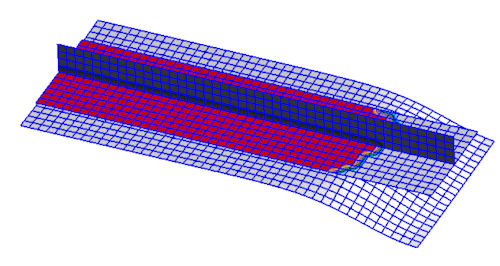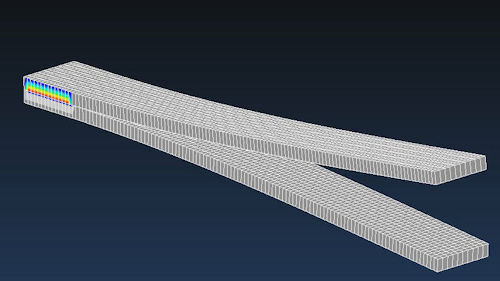Latest News
December 4, 2001
By Anthony J. Lockwood
Composites are the thing. You name it—cars, fishing rods, wind turbines, jets —our daily life is built with composites. And why not? The stuff is light, resistant to corrosion, strong, and stiff. They save energy: lighter structures can be sent aloft, driven around, or toted about. You can fabricate composites into shapes you couldn’t afford to machine with metals.
Still, composites have costs. You have to analyze and test your materials to determine if strength and stiffness meet your safety and other product specification criteria. Computer-based simulation enables more frequent, low-cost analyses of composite materials with fewer costly physical prototypes. This is where today’s Check It Out on-demand webinar begins.
“Progressive Ply Failure Using MSC Nastran,” focuses specifically on FPF (first ply failure) analyses of composites. This is not the sole form of composite analyses that MSC Nastran offers, but it is a topic worthy of its own exploration. I should mention that MSC Software purposely put aside webinars on other composite analyses, such as delamination, for another day.
The logic here is that FPF analysis is generally assumed to be acceptable for signing off on a drawing. However, the pitfall of that is the low margin of safety in an FPF-only analysis can lead to excessively conservative sizing. This both complicates design and manufacture as well as increases cost. Consequently, the more you know about a structure’s post-FPF performance, the better you’ll understand it. Knowledge, of course, leads to more confidence in a design and less risk.
 This webinar addresses and demonstrates how you can build confidence by answering such questions as: What’s FPF got to do with abrupt failure? How is stress re-distributed over adjacent plies or adjacent elements after ply failure? How far away is FPF from last ply failure? What happens after first ply failure?
This webinar addresses and demonstrates how you can build confidence by answering such questions as: What’s FPF got to do with abrupt failure? How is stress re-distributed over adjacent plies or adjacent elements after ply failure? How far away is FPF from last ply failure? What happens after first ply failure?
MSC Nastran supports various failure indices for calculating failures, including single-value failure indices—such as Hill and Tsai-Wui —and multiple indices that distinguish between fiber and matrices —such as Hashin and Puck. The heart of this webinar is a 20-minute demo on open hole tension analysis using Puck.
This 40-plus minute webinar assumes that you have a good handle on ply failure analysis. I do not, yet I found it all easy to follow and informative. The first half of the webinar serves as an introduction to MSC Nastran composite tools and an in-depth set-up for the demo. The presenter, Larry Pearce, obviously knows his stuff. His pace is brisk, but never hurried nor obscured with techno-blather.
“Progressive Ply Failure Using MSC Nastran” is both engaging and educational. It imparts a lot data clearly and concisely. The demonstration it provides is top-shelf. Regardless of your level of familiarity with ply analysis, watching this webinar re-broadcast is well worth your time.
Thanks, Pal. — Lockwood
Anthony J. Lockwood
Editor at Large, Desktop Engineering
Subscribe to our FREE magazine, FREE email newsletters or both!
Latest News
About the Author
Anthony J. Lockwood is Digital Engineering’s founding editor. He is now retired. Contact him via [email protected].
Follow DE





